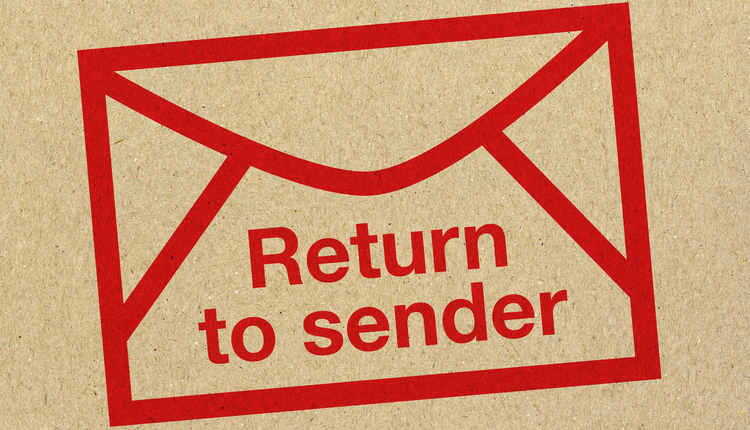Editor's Note: This piece was originally written for our sister publication, PARCEL, but with more and more mail centers seeing an increase in inbound packages, we thought this information would be valuable for our Mailing Systems Technology readers, as well.
Inbound package volumes are growing in all types of organizations — from law firms and educational institutions to e-commerce, manufacturing, healthcare and financial businesses. Managing incoming parcels can quickly become challenging. That’s why, for many organizations, an automated inbound receiving and tracking system is vital to getting packages to recipients quickly and efficiently, while minimizing liability.
INBOUND CHALLENGES
These days, almost all organizations are receiving packages with items ordered by employees for their personal use. Employees want to ship purchases to their place of work to avoid home theft. When the package hits the mail room, the recipient receives the carrier notification of delivery, but the mail room still has to get the package to the employee and the organization is now liable for its condition.
Next, we have e-commerce returns. A big challenge here is coordinating a return with the Returned Merchandise Authorization (RMA) that confirms the company can accept it. When this is done manually, errors both cost the firm and disappoint customers.
E-commerce is growing at a rapid pace. For years, Amazon has offered free shipping with its Prime membership, which costs $100 per year. This online behemoth is now competing with the world’s largest brick-and-mortar retailer — Walmart, which recently announced they’re eliminating the membership fee on their free two-day shipping program. Walmart has also lowered the order minimum for free shipping from $50 to $35 and made more than two million items available for free express delivery.
Colleges and universities often see even larger inbound package volumes than businesses. For most people, online shopping spikes at the holidays. But college kids do everything online from their phones — and that includes shopping for pretty much everything. The University of Connecticut Storrs campus, with more than 19,000 students, handles 140,000 to 150,000 packages a year. Haverford College, with 1,200 students, still deals with 400 to 500 packages a day. And it’s not just students. Faculty members receive important documents, such as research materials, every day.
Inbound parcels need to be recorded, sorted and often put into a delivery system with the recipient notified that their package is available for pickup. The challenge is that these necessary processing steps – which have historically been completed manually with pen and paper – take time, which creates a gap between when the student receives delivery notification directly from the carrier to when the package is actually ready for pickup or delivered. The latest receiving and tracking software helps automate this process to ensure packages are recorded, sorted and entered into the delivery system without delay. Any delays or errors in this process can extend the school’s risk and liability for the package. Such delays may also cause students to line up for their packages too soon and invite complaints from tuition-paying parents.
In law firms, with parcels and documents typically shipped overnight, an inbound package receiving and tracking system can provide a record of the chain of custody. Requiring signatures to go from one person to another, the system lets you manage a parcel or document from when it enters your facility and its movement is time stamped.
Similar challenges are found in many other fields, such as finance and healthcare, with shipping medical devices. Even large residential buildings with reception lobbies use such systems to let management track a package to delivery to the recipient, relieving the management company of liability and automating a tedious manual process.
WHAT TECHNOLOGY CAN DO
An automated inbound tracking system meets these challenges by giving you an easy and efficient way to manage the flow of packages within an organization. This starts with the elimination of errors. An automated system accurately records in all notifications the 20+ digit carrier tracking number that can be easily misreported in phone calls, emails and on paper slips. Additionally, delivery notification problems can occur when major carriers use local deliverers for the last mile. The USPS scans all packages when they go onto the truck and some inbound tracking systems include software that links to these scans. This lets you know when true delivery happens so you can manage pickups more effectively and more efficiently.
There are inbound tracking systems that can support whatever delivery system you have, including intelligent lockers. The best systems facilitate receipt of the package and enable an interface to the locker, so when the package is deposited, data from the locker generates an email to the recipient.
You can choose from a SaaS-based, hosted or an on-premise solution, which gives you the most flexibility to customize. Be sure to research the technology stacks, looking at data integrity and data security, as there are lots of rudimentary systems out there without a lot of technology around them. You may also want to consider using heavy-duty hand-held devices when receiving packages, to avoid bottle necks at PC workstations. These mobile devices let you do everything you can do on a PC in receiving and delivering packages, in a wireless, real time environment.
The need for an automated inbound tracking system all comes back to the growth in parcel shipping. The inaugural Pitney Bowes Parcel Shipping Index forecasts a 20 percent increase in global parcel shipping by 2018, driven primarily by growth in e-commerce, with an increasing number of online shoppers around the world.
CHRIS GILES is Vice President, Global Product Management, Pitney Bowes. Previously, he held the position of Vice President Marketing, Core Mailing, Solutions and Competitive Marketing at Pitney Bowes. He has been active in the industry for over 20 years and brings a wealth of knowledge to his current position.













